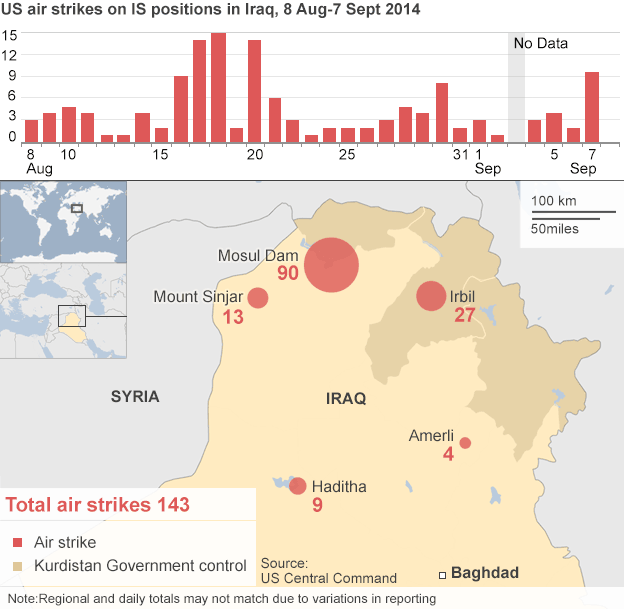
America’s New War in Iraq
America’s New War in Iraq
On August 7, 2014, President Obama informed the world that America was going to war in Iraq again. He did not actually use the word ‘war’ to describe the U.S. military intervention, but that in effect is what was happening. The next day, the first publicly acknowledged U.S. airstrike occurred as U.S. Navy McDonnell Douglas F/A-18 Hornet fighters bombed Islamic State artillery units. Later that day, four U.S. fighters also bombed an Islamic State military convoy.
Thus began the first public phase of the new U.S. war in Iraq in order to protect the weak Baghdad government as well as the semi-independent Kurdish Autonomous Region. Before long, the American intervention will likely extend to attacks inside Syria as well, as the insurgent Jihadists calling themselves the Islamic State are hard at work building their fundamentalist Islamic Caliphate on both sides of the desert border.
While the August 8 attacks were the first public combat against Islamic State forces, the American battle against ISIS actually dates back to July 4, 2014, when U.S. warplanes and Special Forces units attacked an Islamic State base inside Syria in a failed attempt to rescue U.S. hostage James Foley. Foley was later executed in barbaric fashion by an ISIS thug on a video later released to the world.
After the Foley murder, the United States expanded its new war in Iraq and increased the number and type of airstrikes on the Jihadist insurgents. Other allied nations have sent advisors and weaponry to aid Iraqi and Kurdish forces. On September 19, French warplanes struck ISIS targets in Iraq in the first acknowledged non-U.S. airstrike of the campaign.
This is a war of Orwellian complexity and confused alliances. Since ISIS is simultaneously battling both the Iraqi and Syrian governments, the U.S and the other Western allies are de facto on the same side as the vile Assad regime. And both the Baghdad and Damascus governments are receiving direct military support from Iran (and in Syria’s case, Hezbollah), which is very awkward, as the U.S. and Iran have engaged in a form of cold war since the late 1970s. Add to this that the U.S. and other allies have been aiding the non-ISIS Syrian rebels, who are in combat not only with ISIS, but with the Assad regime and Hezbollah/Iranian forces in Syria.
Who knows where this will all end. As the timeline of the U.S. military intervention in Iraq and Syria grows, updates will be posted as events develop in this new Iraq War for America.

